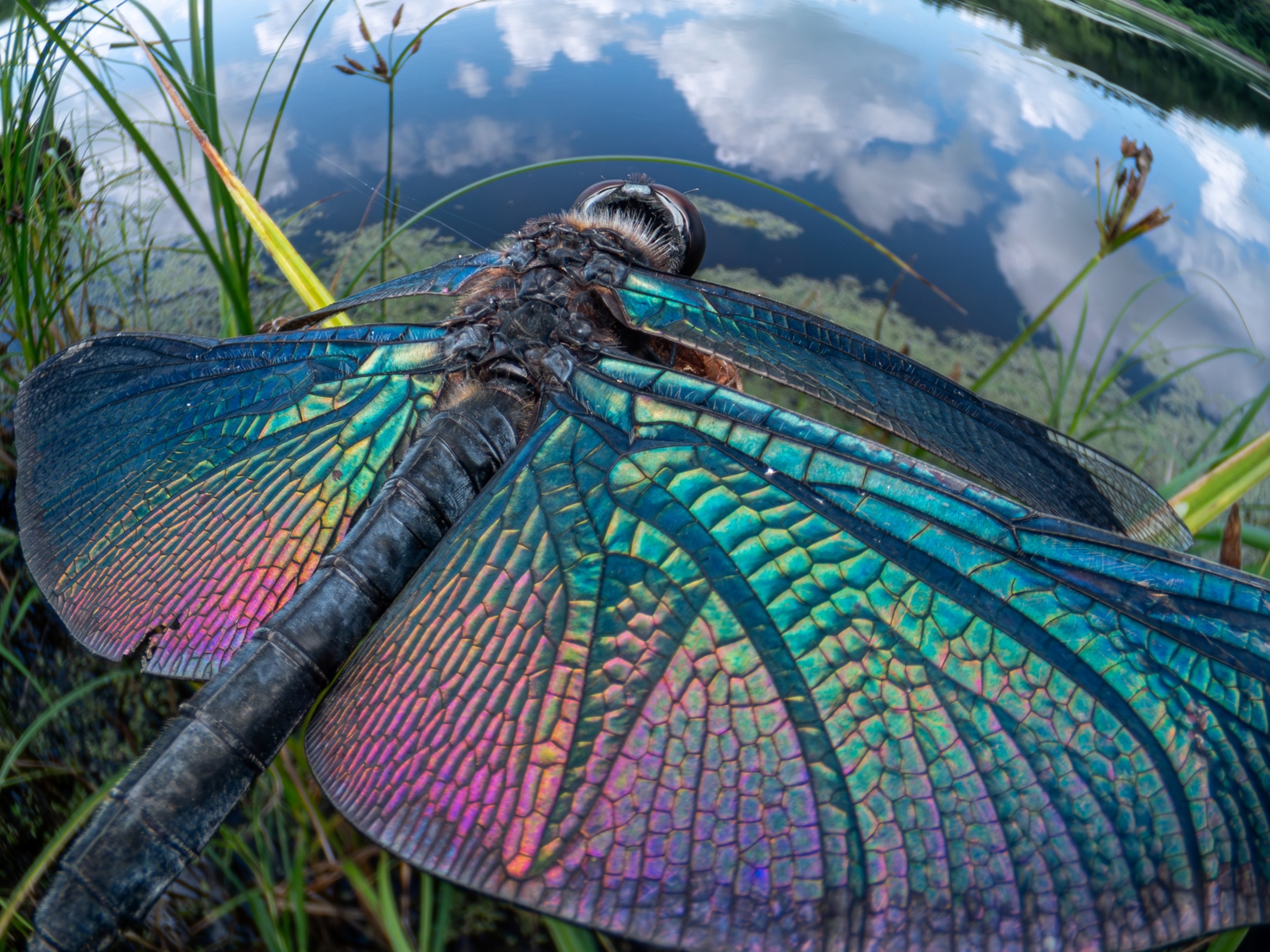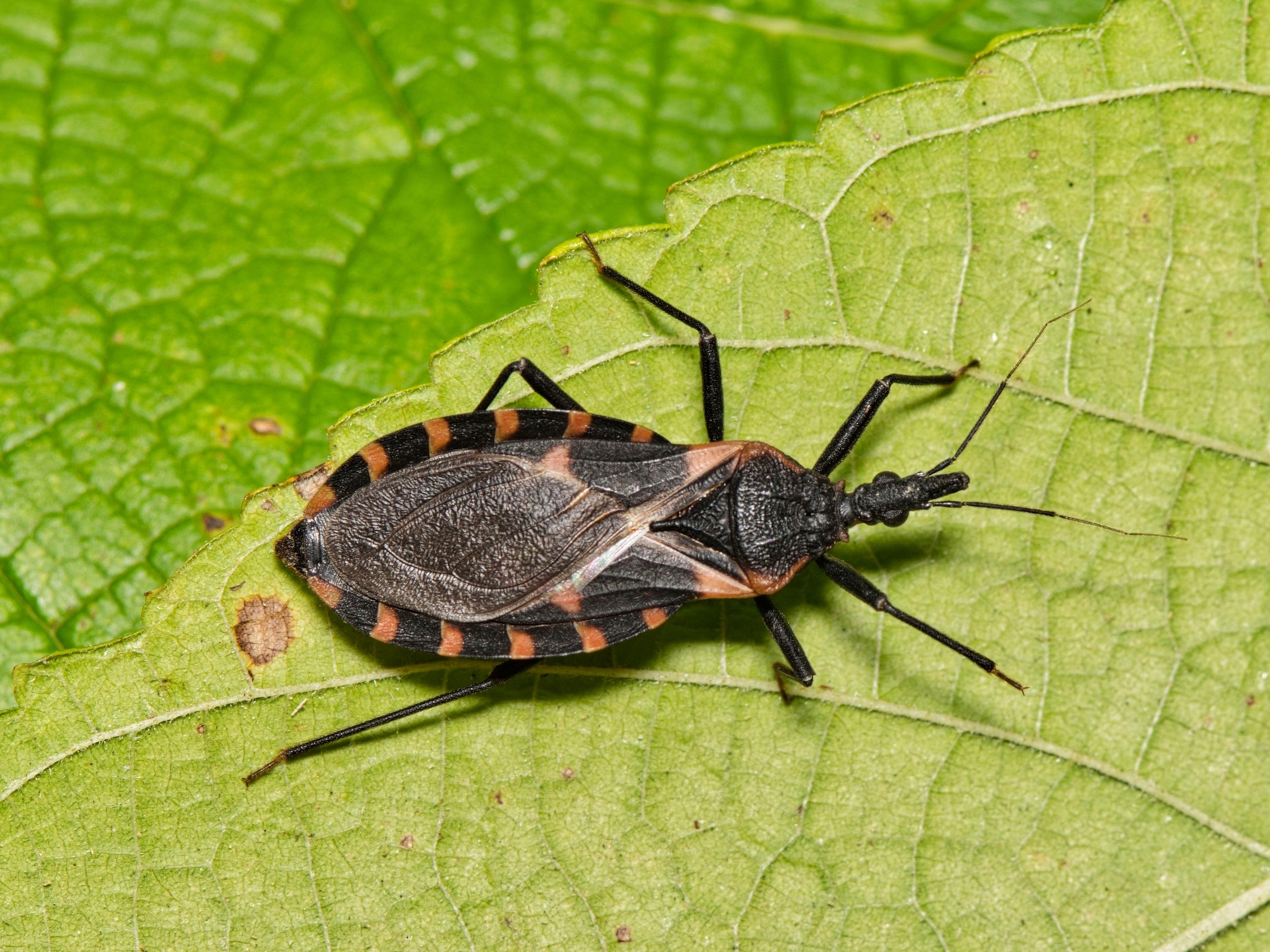This deadly prehistoric wasp captured prey with 'Venus flytrap' abs
This one-of-a-kind predatory strategy has never been seen in other insects. Scientists think it was used to trap flies into incubating the wasp’s eggs.
In Greek mythology, the sea monster Charybdis swallowed and regurgitated large volumes of water, creating whirlpools powerful enough to drag passing ships to their doom. Ninety-nine million years before the myth was created, in the mid-Cretaceous, the wasp Sirenobethylus charybdis deployed a similar deadly trap that recently earned it a scientific name inspired by the mythological monster.
A Venus flytrap-like structure on the wasp’s abdomen held captives in place as the wasp deposited its eggs into its victim, forcing it to incubate its offspring. That’s the finding of a new paper published in the journal BMC Biology that examined dozens of wasps entrapped in amber.
“This discovery reveals that ancient insects had already developed sophisticated prey capture strategies,” says Wu Qiong, the lead author and a doctoral student from the College of Life Sciences at Capital Normal University, “It’s reshaping our understanding of parasitic wasp evolution.”
Examining amber under the microscope
The amber containing the specimen Sirenobethylus charybdis is no larger than a dime. In 2015, a Chinese fossil collector purchased these fossils from Myanmar’s Kachin state and donated them to Capital Normal University of China.
To the naked eye, Sirenobethylus charybdis looks like a modern wasp with a wider-than-average abdomen.
“At first, we attributed this to deformation during preservation, especially since such deformation and distortion is common during fossilization,” says Wu.
But under closer inspection—through microscope and CT scans—a remarkable structure was revealed.
The abdominal tip of the wasp featured three flaps arranged in a configuration similar to a Venus flytrap. On multiple fossils, the lower flap opened at slightly different angles, suggesting it can move and grab onto things. Just like a Venus flytrap, the underside of the lower flap is also lined with long, flexible hairs that sense movement.
When an unsuspecting insect triggered these hairs, it may have activated the swift closure of the abdominal flaps, allowing the wasp to secure the host.
Scientists don’t think the wasp killed its victims right away but instead used it as a living incubator for its offspring.
Numerous stiff, hair-like structures on the upper side of the lower flap, along with the relatively pliable middle flap, would gently but firmly secure the host until the wasp finished laying its eggs. Only then would the wasp release its captive.
“The ‘Venus flytrap’ structure exhibited by the abdomen of Sirenobethylus charybdis is unprecedented in the entire history of Mesozoic insect research,” says Wu, “nor has anything similar been documented in living insects.”
Chenyang Cai, who was not involved in the study, is a paleoentomologist at Nanjing Institute of Geology and Palaeontology at the Chinese Academy of Sciences. He praised the fossil wasp as a “unique” discovery. He explained that Sirenobethylus charybdis is “very different from today’s wasps or other insects” and its existence “highlights the diversity of insects in the mid-Cretaceous period, revealing forms we had never imagined”.
An evolutionary oddity
Scientists don’t know which insects Sirenobethylus charybdis used to host its eggs. Given the small size of its trapping structure, these hosts were possibly tiny, agile insects such as springtails or small flies.
By studying similar species living today, the team pieced together other theories about this prehistoric wasp.
As a distant relative of Sirenobethylus charybdis, the present-day pincer wasp has also evolved the ability to trap its host—temporarily restraining it, laying eggs, and then releasing it.
Female pincer wasps have front legs modified with a pinching apparatus, allowing them to firmly grasp hosts when they lay eggs. These wingless hunters, with large eyes and slender legs, are well adapted for moving swiftly and capturing other insects.
In contrast, Sirenobethylus charybdis appears to be more cumbersome. They have smaller eyes and shorter legs, which suggest they were slower than pincer wasps.
The grasping structure located at the rear of their body also makes it difficult to capture hosts in motion. Based on these characteristics, researchers think it was a sit-and-wait predator—likely remaining stationary and ambushing hosts that wandered too close.
Mid-Cretaceous amber fossils like this one, noted Cai, reveal insects of that age were “incredibly diverse—perhaps even more specialized in some cases than what we see today.”
Such findings, he emphasizes, are “a crucial reminder that studying only living species will never give us the complete story of evolution.”





